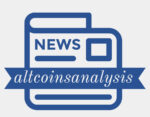**Solana (SOL) and Ethereum (ETH): The Race for Crypto Supremacy in 2025**
As we look ahead to 2025, Solana and Ethereum are in a friendly competition to become the leading cryptocurrency investment. Solana shines with its faster and more affordable blockchain, giving it a notable advantage over Ethereum in several important areas. This year has seen its fair share of ups and downs in the crypto market, with many assets struggling to gain traction. Yet, Solana is emerging as Ethereum’s most formidable rival. With its impressive transaction speeds and low fees, it’s capturing attention, and a growing number of developers and users are joining the Solana community every day. The burning question is: Could SOL actually take the crown from ETH as the reigning smart contract champion? While Ethereum has long been the heavyweight in the DeFi arena, this new contender is gaining strength by the day.
**What Makes Solana Shine**
Solana’s blockchain is notably faster and more efficient than Ethereum’s. While Ethereum manages around 15 transactions per second, Solana can handle over 4,000! This remarkable speed, paired with lower transaction costs, makes Solana a more appealing option for both users and developers. For instance, Ethereum transactions can cost up to $0.90 and take about 31 seconds to complete, whereas Solana transactions settle in under five seconds and cost just a tiny fraction of a cent.
Investors often feel anxious when new supply enters the market, and understandably so. The value of an asset is closely linked to its availability. Recently, this concern has been particularly relevant for Solana. However, the worst-case scenario that many investors dreaded didn’t materialize. On March 1, 11.2 million SOL—approximately 2.2% of its total supply, valued at around $2 billion—was unlocked and made available for sale as part of the FTX bankruptcy process. Many feared that such a large influx of tokens would send Solana’s price plummeting. Surprisingly, the price remained stable because most investors who received the unlocked SOL chose to hold onto it, believing it will appreciate even more in the future.
Ethereum, on the other hand, is facing some challenges. Its leadership is under scrutiny for not addressing persistent issues like high gas fees and slow transaction speeds. Consequently, Ethereum is currently navigating a transition phase, working to regain the trust of both investors and developers within its ecosystem.
Solana is particularly well-suited for decentralized finance (DeFi) activities, NFT minting, and meme coin trading. Its lower fees and quicker processing times encourage more frequent transactions, leading to higher adoption rates.
**Ethereum’s ETF Edge**
One area where Ethereum still holds an advantage over Solana is its regulatory approval for an ETF (Exchange-Traded Fund). This approval has made Ethereum more accessible to traditional investors, lending it a level of legitimacy and institutional support that Solana is still working to achieve. While Solana is actively pursuing its own ETF, Ethereum’s head start in this arena gives it a significant edge in attracting investors.
As the competition heats up, it will be fascinating to see how both Solana and Ethereum evolve in the coming years!




